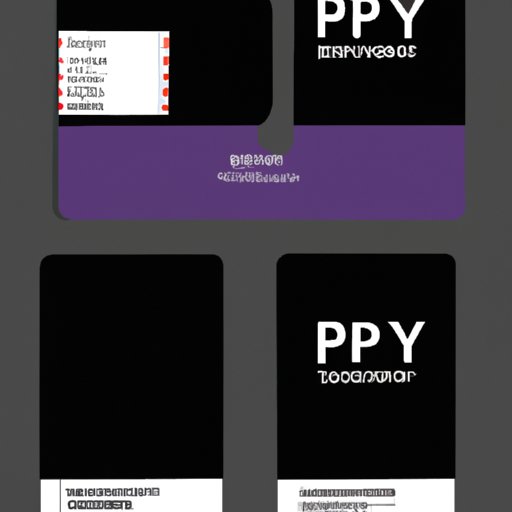
Introduction
Business cards are more than just a simple means of exchanging contact information. They’re powerful marketing tools that can make or break a brand’s image. When it comes to creating a professional and memorable first impression, every detail counts, including the size of the card. In this article, we’ll explore the importance of choosing the right dimensions for your business card, and provide practical tips and advice for creating a design that communicates your message effectively.
The Importance of Proper Business Card Dimensions: A Guide
The size of a business card may seem like a small detail, but it can have a significant impact on how people perceive you and your business. The right size can convey a professional image, help your brand stand out, and make your card more memorable. On the other hand, an improper size can make your card appear unprofessional, difficult to handle, or even get lost in a pile of other cards.
3 Commonly Used Business Card Sizes and Which One is Right for You
When it comes to business card sizes, there are three primary dimensions that are most commonly used:
- Standard (3.5 by 2 inches)
- Square (2.5 by 2.5 inches)
- Mini (2.75 by 1.125 inches)
Each size has its pros and cons and is suited for different industries, messages, and branding strategies. For instance, the standard size is the most widely used dimension and is ideal for conveying a traditional, professional image. The square size is popular for creative industries, such as graphic design and photography. The mini size is often used by businesses that need to convey a short message or are looking for an unconventional approach to branding.
How to Create a Professional Business Card: Tips for Choosing the Right Size
Choosing the right size for your business card is just the first step in creating a professional and effective design. Other factors to keep in mind include your branding guidelines, message, target audience, and contact information. When designing your card, it’s essential to create a layout that’s easy to read, visually appealing, and aligned with your brand style and values. Be sure to choose a font size and type that are clear and legible, and avoid cluttering your card with too much text or graphics.
Small but Mighty: The Power of a Well-Designed Business Card
As small as they are, business cards have the power to communicate a lot about your brand and professionalism. A well-designed card can help you make a strong impression, enhance your credibility, and build brand recognition. It can also be a powerful marketing tool, providing an opportunity to showcase your unique value proposition, services, or products.
For example, creative business cards using the standard size can use double-sided printing or die-cut shapes to add interest and communicate different information on each side. Square cards can use asymmetry or bold graphics to make an impact. Mini-cards can use unique shapes and materials, such as wood or plastic, to create a memorable experience.
The Psychology Behind Business Card Size and Why It Matters
The size of a business card isn’t just a matter of aesthetics; it can also have a psychological impact on how people perceive you and your business. Research has found that different sizes can affect perceived competence, trustworthiness, and attractiveness. For instance, larger cards tend to be perceived as more competent, while smaller cards are associated with creativity and innovation. Square cards can be seen as more unique and stand out, while mini cards can be perceived as fun and playful.
Breaking the Mold: Unconventional Business Card Sizes and Designs That Work
While standard, square, and mini are the most commonly used sizes, they are by no means the only options. Creative professionals and businesses can benefit from breaking the mold and using unconventional sizes and shapes to stand out. Examples of non-traditional business cards include foldable cards, round cards, or even cards with built-in USB drives or magnets for added functionality. However, unconventional designs can be tricky to handle, store, and distribute, and should be used carefully and strategically.
Conclusion
Choosing the right size for your business card is a critical step in creating a professional image, building brand recognition, and effectively communicating your message. By keeping in mind your branding guidelines, target audience, and message, and incorporating practical design tips, you can create a memorable and effective business card that serves as a powerful marketing tool for your business.




